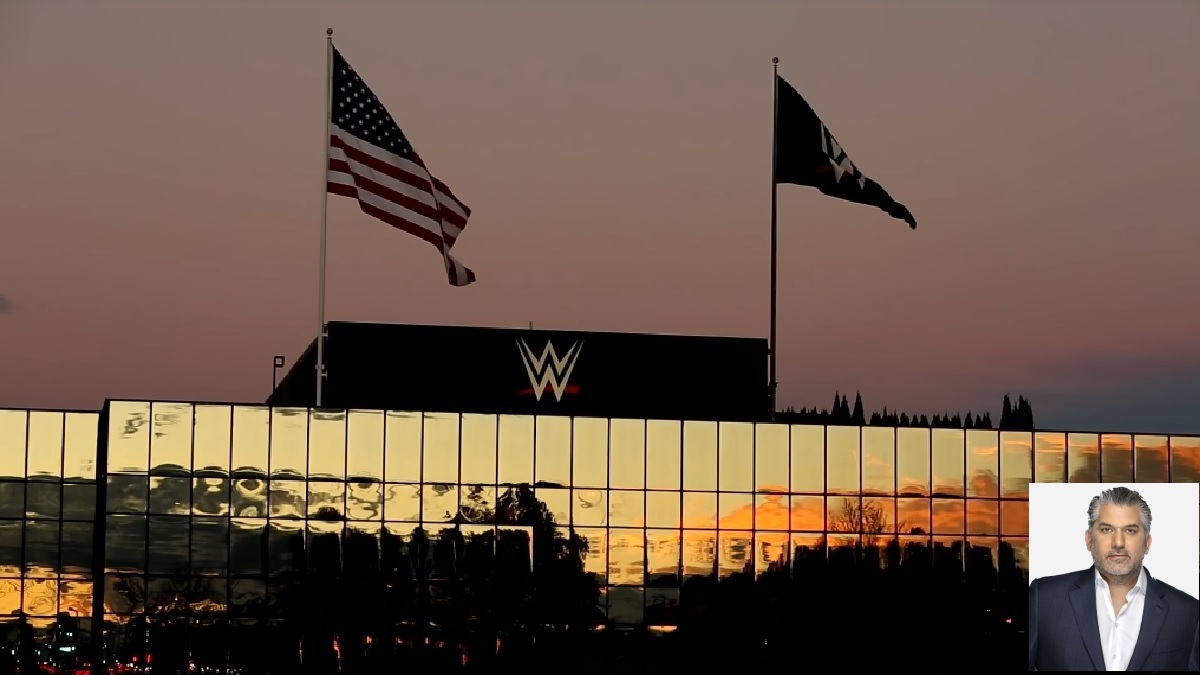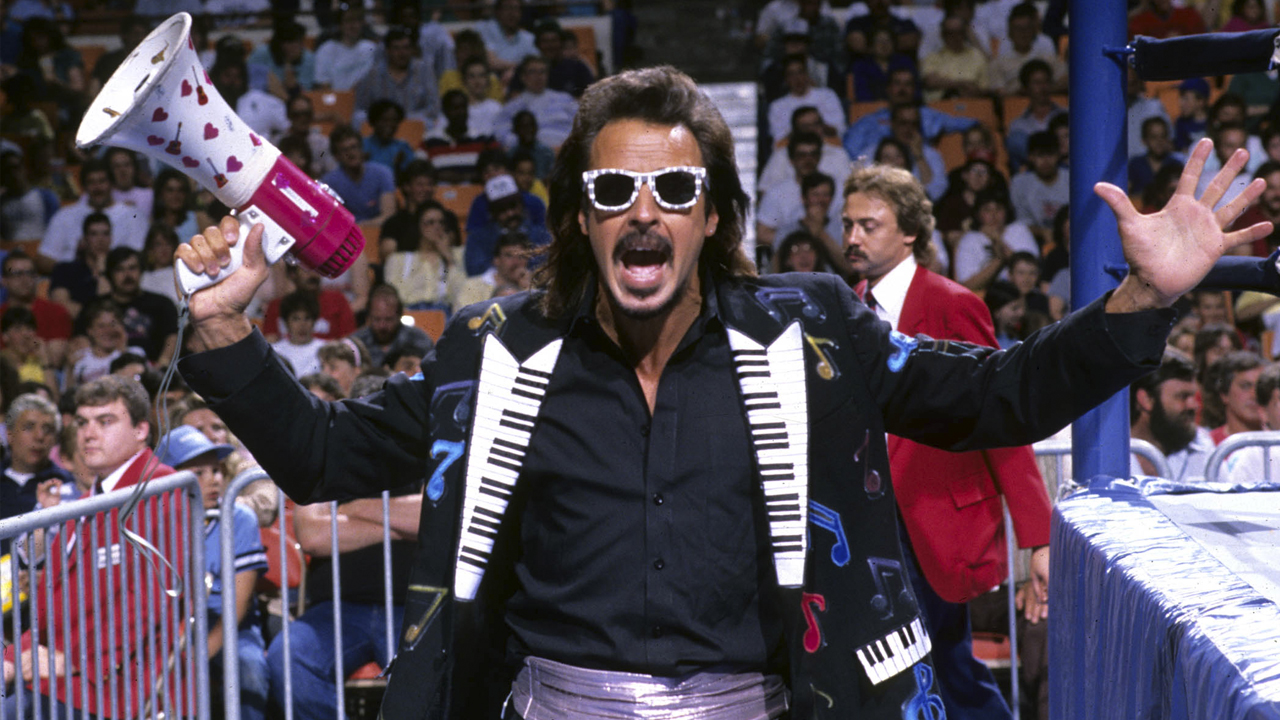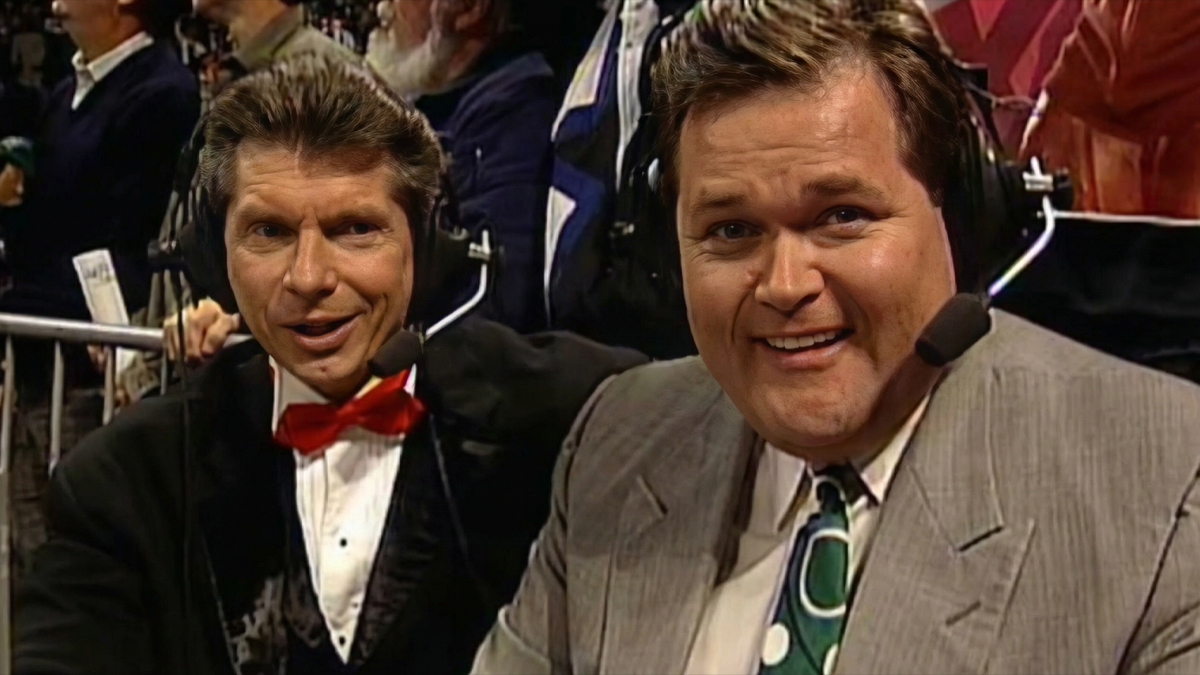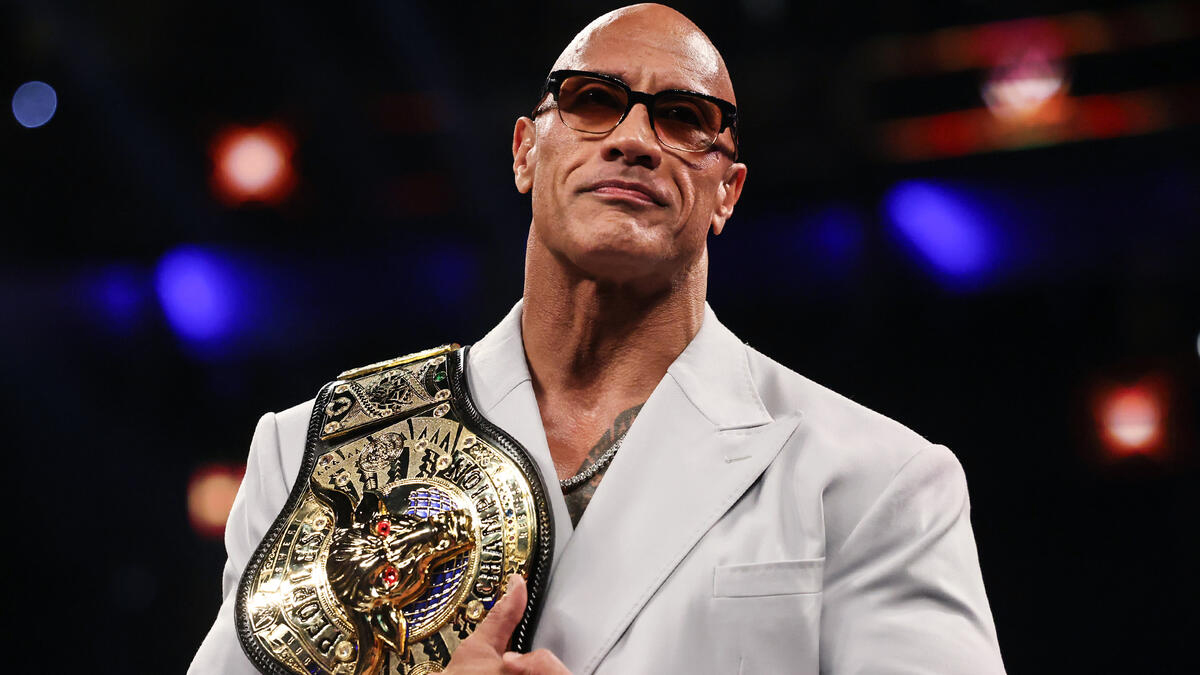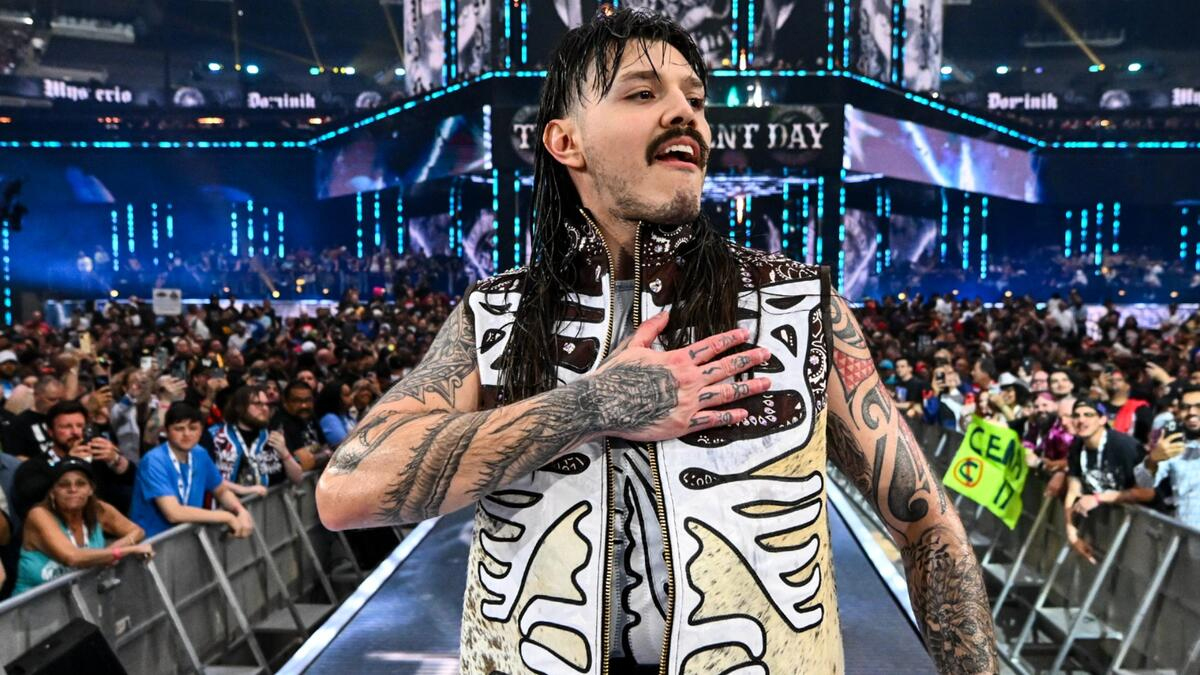WWE CEO Nick Khan was interviewed at the SVB MoffettNathanson Technology, Media & Telecom Conference on Thursday. In the 45-minute session, Khan talked about the status of their ongoing media rights discussions for their RAW and Smackdown shows, provided his thoughts on the future of broadcasting and how WWE has been able to stay ahead of the curve in the evolving landscape, and offered some thoughts about the potential benefits for WWE once the company’s sale to Endeavor and merger with UFC is finalized.
About that Endeavor deal, Khan noted that it was Chairman Vince McMahon’s decision to explore “strategic alternatives” in the company’s ownership structure.
“At 77 years old, having worked for 50-plus years to build what is now a multi-billion dollar empire, he wanted to see if there was actual merger, acquisition, sale – whatever we might want to do – to see if that could be real.”
Khan shared that he wondered if McMahon was legitimately looking to make a deal, or whether he only made that claim to justify his taking back the Board Chair position that he had vacated late last year as the result of a sex scandal. “
He and I had a private conversation, which he’s certainly comfortable with me sharing it today, where I said ‘Tell me is this real, because there’s some scuttlebutt out there that maybe this is just your way to come back in to your company.’ And he said, ‘No I’m committed to it. I give you my word.’ And lo and behold,” Khan said, “he was serious about the process.
In terms of finding a buyer, Khan said there was a lot of interest, but “ultimately at the end of the day, Endeavor proved to be the right partner for it.”
The deal is expected to be finalized later this year, pending regulatory approvals.
Once all the legal I’s are dotted and T’s crossed, Khan said the next priority for the merged company will be to explore cost savings through corporate synergies.
“We’ve made a commitment to the street and to everyone else that there would be at least $50 million in cross-synergies,” Khan said. “Those are not the easiest processes to go through, but we already have transition teams in place and we’ve started that process to see how can we make the two companies more efficient under the new umbrella company.”
After that, the focus will be on how to make money. “Anyone can slash-and-burn,” he noted. “Then we have to grow the (company).”
He provided some examples of where some revenue synergies might be realized post-merger.
“WWE has a pretty significant toy deal with Mattel. Because the UFC fighter deals are structured a different way than the WWE talent deals, you’ve never seen a Conor McGregor action figure. Because to have one athlete to do it, it’s not worth Mattel’s time. So, to pull those things in, to combine the merchandise efforts (is one example). To combine international sales, where Endeavor has been quite strong and UFC has been quite strong, we think all of those will lead to more revenue and less costs over a period of time.”
Unfortunately, the timing of WWE’s and UFC’s broadcast rights deals don’t allow for them to negotiate a combination package. But WWE is still optimistic about the deal it will get, and is in discussions with various potential partners – including the incumbents FOX and NBCU which air Smackdown and RAW, respectively.
“FOX and NBCU have been great partners for us,” Khan said. “Our preference would be to stay with both of (them). Like any negotiation, they want to pay as low as they can, and we want as much as they can. (Our) hope is to have a material increase in the way there was a material increase the last time. The reality of it is that we’re going to get a really big increase for both of these properties. It’s too early yet to say is it 1.5X, is it greater than 1.5X? Our focus is getting maximum return for WWE’s product.”
Khan feels that the company’s unique offering, its significant fan base, and its proven track record all make WWE programming an attractive fish for any broadcaster – traditional or streaming – to land.
“The way that (our distribution) works in the current structure has been quite beneficial for WWE. We have a free-to-air partner in FOX, we have a basic cable partner in USA, and we have a streaming partner in Peacock for Premium Live Events. We like the current set-up – some version of that would probably work well for us.”
But he didn’t rule out changing partners if the deal was best for business, noting that existing streamers are looking for more content – including live content, which could make for a good fit with WWE.
“It’s only a matter of time before Netflix gets into live sports or sports-like product,” Khan predicted. “Even if you look at what Netflix tried with the Chris Rock special – which from our point of view was extremely successful – in airing it live, it worked. For a company like Netflix, with WWE, we’re a turnkey property. We don’t have to get production trucks, we don’t have to figure out how to produce it. We just have to do a deal, and boom, we’re up and running in whatever country you want us to be up and running in. Netflix has had challenges in India. WWE is the second-most popular sport – and, yes, I understand we’re sports entertainment, we’re not a sport. But we’re the second-most popular sport in India after cricket. Granted it’s a distant second, but we’re still number two. In terms of being able to generate subs in countries like India, we think we can do it like nobody else.”
Speaking about India, Khan noted that they are paying close attention to opportunities there, in anticipation of their current broadcasting deals coming due in the next couple of years. As part of that attention, Khan broke the news that they will be doing a live event in India this September. He also noted that they are trying to make it easier for new Indian talent to train the company and potentially become WWE Superstars.
“One of the purposes of having (a) training facility (in London, England) is for talent in India. It’s a heck of a lot easier for them to get to London than it is for them to get to the United States. Especially when there were all the COVID restrictions. We wanted it to be an easily-accessible spot for them in London, which it is.”
But Khan isn’t only focused on the huge Indian market; indeed, it appears he is looking at multiple ways to expand the number of eyes on WWE’s product – both on TV and in-person.
He noted a number of developments – and potential opportunities – to do exactly that.
First, looking at how Premium Live Events are scheduled.
“We think there’s a gap in American programming where certain American-only Holiday weekends should be programmed with sports, and they’re not,” he observed. “The prime example being the Fourth of July weekend, where there’s so little content on TV that people actually pay attention to the Nathan’s Hot Dog Eating Contest – no disrespect to Nathan’s. But there’s nothing to watch. So we think the mistake in thinking was that people are traveling for the Fourht of July weekend. True, a lot of people travel. But by the Saturday of Fourth of July weekend, they’ve traveled to wherever they were going to go. The fact that we’re on a direct-to-consumer streaming platform like Peacock means you can watch it on your phone, your iPad, or whatever it is.”
“So we started this last Labour Day weekend. We did a stadium show from Cardiff, Wales. We had a government subsidy on the show – we had to hit certain markers, which we did, so we got 100% of the subsidy. We sold over 65,000 tickets. We’re going next weekend back to Saudi on Memorial Day weekend, and Fourth of July weekend we’ll be at the O2 in London, which is already on the way to a sell-out, and we’ll be doing Friday Night Smackdown from the O2. “
He noted the success the company is having by integrating mainstream pop culture stars with the product, noting their deal with Bad Bunny proved to be particularly fruitful.
“During the pandemic, there was a New York Times Sunday magazine cover with Bad Bunny on it. I didn’t know Bad Bunny’s music that well at that moment. I read the article and a young lady who works with us said ‘I don’t know if you knew but Bad Bunny is a huge wrestling fan.’ She showed me his Instagram feed – when Triple H was an active wrestler, he had this entrance which includes this water routine, and Bad Bunny had done it at a Miami Heat game. He’s a huge, huge fan.”
“During (COVID), we saw that this was the first time that… (Bunny) was not touring. He was sitting at home like the rest of us. We reached out to him and said ‘What do you think of this?’ and he said ‘Yeah, I’m not doing anything, I’d love to do it.’ So Bad Bunny came in and lo and behold our Spanish viewership for the show he was on spiked 30 or 40 percent. Obviously, the relevancy factor mattered. He wanted to do more and more, and boom, Bad Bunny just a few weeks ago did a Premium Live Event in San Juan, Puerto Rico.
“We also replicated that in a different demographic category with Logan Paul, who we were getting pitched on internally by our Entertainment Relations folks. They were saying Logan Paul was going to be the next big thing. Logan Paul came in, and he took it seriously, as did Bad Bunny, and it registered. Our young audience spiked. So what we realized is, yes, our bread and butter are our full-time WWE Superstars. But to bring in Bad Bunny and Logan Paul and Pat McAfee at different points in time, it just increases awareness, which is good for us.”
Khan also suggested that a longer-term priority would be to potentially add some additional programming, including one that has been discussed internally already.
“Ideally for us, we would (be on TV) every day of the week – as long as there’s unique product that we think we could put on the air, that we think would resonate (with viewers). Something we’ve discussed internally is that lucha libre in Mexico and in LATAM is a big, big product. To start something like that down the road. That’s something that’s interesting to us, especially with the growing Hispanic audience in the United States.”
But don’t set your PVRs quite yet – Khan noted that this is only a hypothetical until “… well after the US and UK media rights are settled, the (merger-related) synergies are in place, and we have our legs underneath us in the new company.”
One other item that isn’t completely off the table is going back to a Pay-Per-View model, the model that is still used by UFC.
“We’re open to all conversations,” Khan noted. “Depending on the what the economics are, depending on what the price points of the Pay-Per-Views would be – and what we think our audience’s appetite on would be for that. That all goes into the equation.”
The audience’s perspective, of course, underpins all business decisions. As an example, Khan pointed to WWE’s embracing of social media over the years to attract and retain younger people in particular.
“You want user engagement,” he stressed. “Even if you look early, Vince and company were first-movers on Twitter and making content available to Twitter when other leagues were sending take-down notices.”
“We’re the most-subscribed-to sports league on Tik-Tok. More than the NBA, more than the NFL. The young audience is there for us. YouTube, we have 92 million YouTube subscribers, which makes us the seventh-most-subscribed-to YouTube Channel. Not the seventh-most-subscribed-to sports YouTube channel, but of all channels. And the others in the top six are things like Indian Music and Cocomelon. So there’s nothing like our product that’s even close. We think our young audience has found us, and we made sure to find them.”
Having and keeping young fans engaged is also a decision used in pricing live event tickets. Khan noted that at this year’s WrestleMania, one of the key decisions made was to keep a certain tier of tickets priced at “family-family” levels, keeping upper bowl pricing at $25.
At the same time, he said the demand for the product allowed them to charge higher prices for premium seating.
“The highest-priced floor seats were the highest prices we’ve ever had – they went for $5,000 apiece face-value. And they sold out in, like, an hour. “
As to how the company can maximize everything that’s going on, Khan summed it up again by pointing directly to delivering what the audience wants.
“As long as the content stays good and fresh, we think we’re going to be good.”
